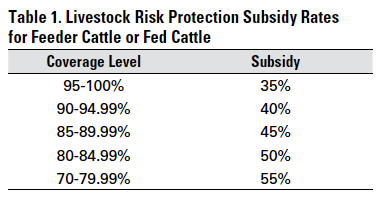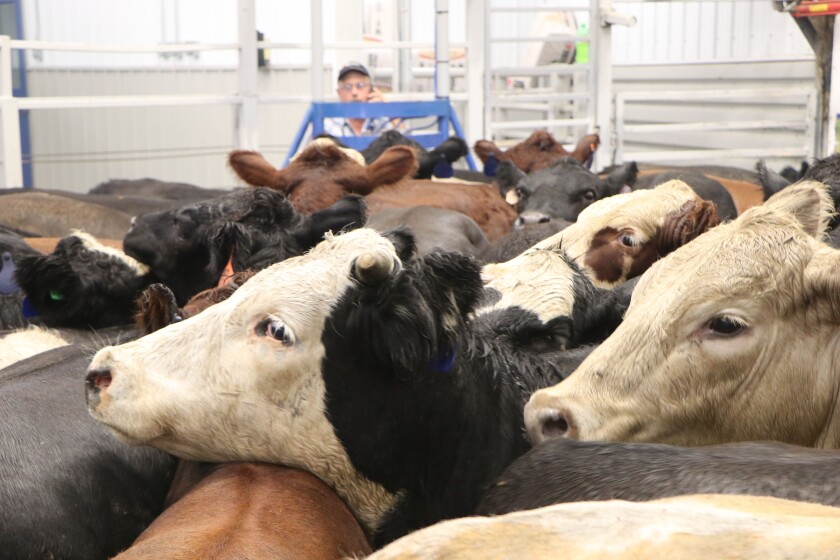Bagley Risk Management Solutions: Your Shield Against Uncertainty
Bagley Risk Management Solutions: Your Shield Against Uncertainty
Blog Article
Comprehending Livestock Danger Security (LRP) Insurance Policy: A Comprehensive Overview
Navigating the world of livestock threat defense (LRP) insurance policy can be an intricate endeavor for numerous in the farming sector. This kind of insurance supplies a security net against market variations and unanticipated situations that can impact animals producers. By comprehending the details of LRP insurance, producers can make enlightened choices that might secure their procedures from economic dangers. From just how LRP insurance policy works to the various protection alternatives offered, there is much to reveal in this comprehensive guide that can possibly shape the means animals manufacturers come close to danger management in their companies.

Exactly How LRP Insurance Functions
Occasionally, recognizing the auto mechanics of Animals Danger Defense (LRP) insurance coverage can be intricate, however damaging down just how it works can give quality for farmers and ranchers. LRP insurance coverage is a danger management tool designed to safeguard livestock producers versus unexpected price decreases. The policy permits producers to establish a protection degree based upon their details demands, choosing the number of head, weight variety, and insurance coverage price. When the policy remains in place, if market costs fall below the protection price, producers can submit a case for the distinction. It is very important to keep in mind that LRP insurance policy is not a profits warranty; instead, it concentrates solely on cost risk security. The coverage duration commonly varies from 13 to 52 weeks, offering flexibility for producers to select a period that straightens with their manufacturing cycle. By using LRP insurance coverage, farmers and herdsmans can reduce the monetary risks linked with changing market rates, making certain better security in their operations.
Eligibility and Insurance Coverage Options
.png)
When it involves coverage alternatives, LRP insurance policy supplies manufacturers the flexibility to select the insurance coverage degree, protection duration, and recommendations that ideal fit their danger management demands. Coverage degrees generally range from 70% to 100% of the anticipated finishing worth of the insured livestock. Manufacturers can additionally choose insurance coverage periods that align with their manufacturing cycle, whether they are insuring feeder livestock, fed livestock, swine, or lamb. Endorsements such as price risk defense can additionally personalize insurance coverage to protect versus negative market changes. By recognizing the eligibility standards and coverage choices readily available, animals manufacturers can make enlightened decisions to take care of danger efficiently.
Advantages And Disadvantages of LRP Insurance Policy
When assessing Animals Risk Security (LRP) insurance policy, it is vital for animals manufacturers to consider the benefits and negative aspects fundamental in this threat administration tool.

Among the key benefits of LRP Visit This Link insurance coverage is its ability to provide defense against a decline in livestock rates. This can aid secure manufacturers from financial losses arising from market fluctuations. Additionally, LRP insurance provides a degree of versatility, allowing manufacturers to customize protection levels and policy periods to suit their certain requirements. By securing an ensured price for their animals, producers can better manage risk and strategy for the future.
One restriction of LRP insurance coverage is that it does not secure against all kinds of threats, such as disease break outs or natural calamities. It is important for manufacturers to carefully evaluate their individual risk exposure and financial situation to identify if LRP insurance coverage is the best danger administration tool for their procedure.
Understanding LRP Insurance Policy Premiums

Tips for Maximizing LRP Advantages
Taking full advantage of the advantages of Livestock Threat Security (LRP) insurance policy requires strategic planning and proactive risk administration - Bagley Risk Management. To take advantage of your LRP insurance coverage, consider go to my blog the following pointers:
On A Regular Basis Examine Market Problems: Remain informed concerning market fads and rate fluctuations in the animals industry. By keeping track of these elements, you can make informed choices regarding when to acquire LRP protection to secure versus potential losses.
Establish Realistic Protection Degrees: When picking coverage degrees, consider your production expenses, market worth of livestock, and potential threats - Bagley Risk Management. Establishing realistic insurance coverage levels guarantees that you are properly shielded without overpaying for unnecessary insurance policy
Diversify Your Protection: Rather than relying exclusively on LRP insurance, think about diversifying your risk monitoring approaches. Incorporating LRP with other risk administration tools such as futures contracts or choices can give thorough insurance coverage versus market uncertainties.
Review and Readjust Protection Regularly: As market conditions alter, periodically examine your LRP insurance coverage to guarantee it lines up with your current danger exposure. Readjusting protection levels and timing of acquisitions can help enhance your threat defense method. By adhering to these suggestions, you can maximize the advantages of LRP insurance and safeguard your livestock operation against unpredicted risks.
Final Thought
Finally, livestock risk protection (LRP) insurance policy is a beneficial device for farmers to take care of the economic risks related to their animals procedures. By recognizing how LRP functions, qualification and insurance coverage options, along with the advantages and disadvantages of this insurance coverage, farmers can make informed choices to safeguard their source of incomes. By thoroughly taking into consideration LRP costs and implementing techniques to make best use of benefits, farmers can minimize potential losses and guarantee the sustainability of their procedures.
Livestock manufacturers interested in obtaining Animals Threat Security (LRP) insurance policy can explore a range of eligibility standards and protection choices customized to their specific livestock operations.When it comes to coverage options, LRP insurance supplies manufacturers the flexibility to choose the insurance coverage level, protection duration, and recommendations that best fit their risk management needs.To comprehend learn this here now the details of Animals Risk Security (LRP) insurance policy fully, understanding the elements influencing LRP insurance premiums is vital. LRP insurance premiums are established by numerous aspects, consisting of the coverage degree chosen, the anticipated rate of animals at the end of the protection duration, the kind of livestock being guaranteed, and the length of the protection duration.Evaluation and Readjust Insurance Coverage Regularly: As market conditions change, occasionally assess your LRP coverage to guarantee it lines up with your existing threat exposure.
Report this page